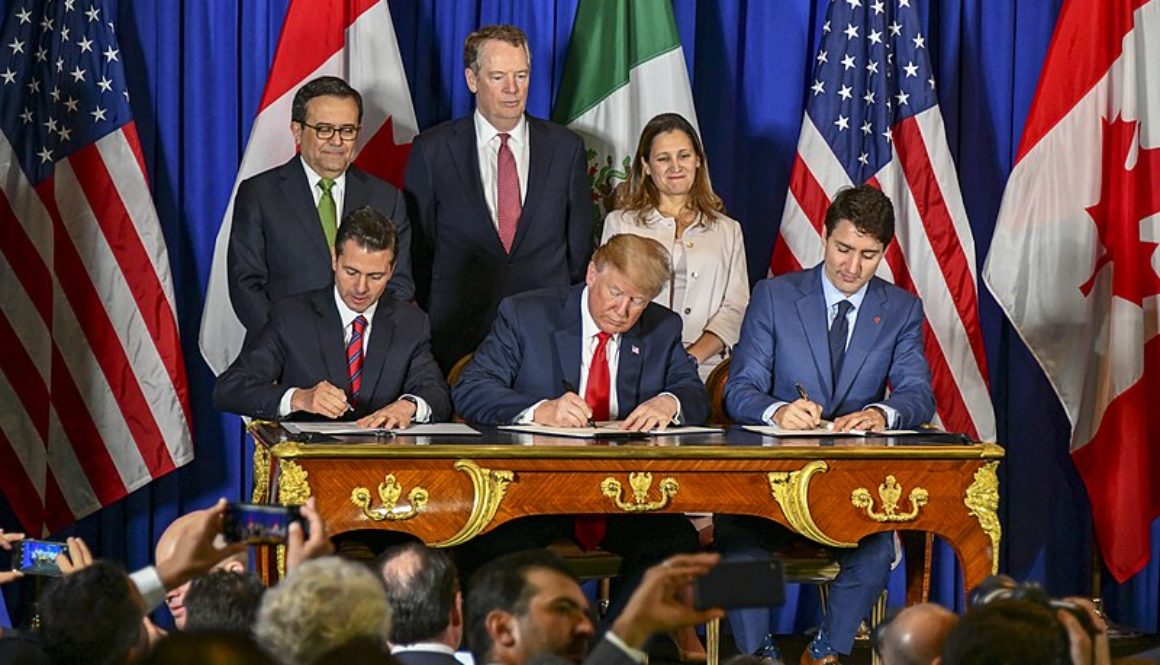United States–Mexico–Canada Agreement means challenges and opportunities for Mexico
The United States-Mexico-Canada Agreement, or USMCA, is soon entering into force of law. In order to take full advantage of the opportunities that it offers, Mexico will have to address some challenges as well.
The July 1, 2020 implementation of the United-States-Mexico-Canada Agreement will create many relevant opportunities for Mexico to attract companies from other nations, as well as from its North American partners to set up operations within its borders.
In addition to the several provisions that are built into the agreement that will have a positive effect on the country’s international commerce, Mexico will also continue to benefit from the ongoing US-China trade war and the adjustments that are being made by industry to global supply chains due to the continuing global COVID-19 pandemic.
Especially important is the effect that Chapter 4 of United-States-Mexico-Canada Agreement will have on the Mexican economy and the nation’s ability to attract foreign direct investment. This section of the pact contains information regarding the new rules of origin that will govern commercial relations going forward between the three North American trading partners.
In the automotive sector, for instance, for a vehicle to now be considered “originating,” seventy-five percent of the value of the content used to produce it must be derived from North American sources. This figure was considerably lower at 62.5% under the soon to be phased out NAFTA.
This change presents many opportunities, especially with respect to manufacturing operations that are currently located in China. The Far East economic giant currently exports US $14 million worth of products to North America in the automotive sector each year alone. It is estimated that, due to the changes in the origination rules for duty-free treatment under the new USMCA, US $4 billion worth of this production will eventually be “reshored” from China to North America. Mexico is sure to capture a significant portion of this economic activity in the form of capital investment and increased employment in its automotive industry.
Chapter 25 of the United-States-Mexico-Canada Agreement deals with the role of small and medium-sized enterprises (SMEs) in the North American economy. Its provisions will enable SMEs to have greater participation in the region’s overall trade. Chapter 19 of the Agreement (dealing with digital trade) creates certainty for North American businesses that are engaged in e-commerce. This is particularly important because, due to the conditions created by the current pandemic, the sales channel for digital commerce has reached a new and higher level of maturity throughout the continent.
United-States-Mexico-Canada Agreement will also create new opportunities for Mexico as the world transitions from a “Just in Time” model of production to a “Just in Case” supply mode. The fact that companies will seek to maintain security inventories of more than 5% will create a new and powerful market for investors in real estate. Securing these inputs will require the existence of an inventory of more than 100 million square meters of industrial properties to store and distribute products. This represents a significant opportunity for Mexico due to the fact that it will require a doubling of North America’s existing industrial real estate inventory.
What can the Mexican federal government do to benefit from the United-States-Mexico-Canada Agreement?
In order to capitalize on the implementation of the USMCA, the government of Mexico must ramp up its investment attraction and promotion activities. The Mexican Secretariat of the Economy has absorbed the functions of the phased out Pro-Mexico organization, but, as of yet, has not delivered significant visible results. At this juncture, the Secretariat of the Economy does not have certified economic development staff at every Mexican consulate and embassy abroad. Additionally, a specific budget to be used for the purpose of attracting businesses from abroad to Mexico has not been officially formulated and allocated. Putting together a coherent effort to attract foreign direct investment is one of the challenges that the current Mexican administration must overcome.
In addition to the aforementioned points, there are opportunities for the Secretariat of the Economy to collaborate with various Mexican chambers of commerce and other organizations that have a presence abroad to disseminate investment promotion materials, as well as to work together to create an environment that is more conducive to increased inflows of FDI.
What can the Mexican state governments do to take advantage of the United-States-Mexico-Canada Agreement?
To take full advantage of the United-Mexico-Canada Agreement Mexican state governments must work to make an objective assessment of regional competitiveness to be able to determine which industries would be feasible to attract. Additionally, state governments must modernize their online platforms so that most businesses can be conducted digitally and so that they are able to collect and disseminate information from and to companies in the industries that they are seeking to attract.
In some instances, several state governments will be best served by working together to bring entire supplier networks to their regions, as not all suppliers to a specific industry will locate to one single state.
States must also improve their regulatory environments. Protocols and mechanisms should be established to enable local authorities and businesses to collaborate to streamline procedures and information collection methods. States that succeed in creating a friendly business environment will be successful in attracting new investment to their communities.
What can municipal governments do?
In order to take full advantage of the United States-Mexico-Canada Agreement, municipalities should work with economic policymakers and members of the business community to generate information on industry and the availability of incentives in their communities. This is especially important because cities, states, and countries conduct a constant keen competition to attract employers to their regions. In addition to general information on industry and incentives, municipalities must present labor skills and costs comparison information, real-estate cost data, information on education, physical, and transport infrastructure, and a description of the quality of life aspects of the local community.
They also can work on improving their infrastructure in ways that will reduce business costs and the time required to bring investment to fruition. This includes the implementation of regulatory simplification and improvement programs and the professionalization of all municipal departments that interact with potential employers. These things must be done with strict adherence to international standards and best practices in the promotion and attraction of investor companies.
Additionally, efforts should be made to develop supplier networks and human capital. In order to have success in these endeavors, local authorities should make it a conscientious point to meet regularly with local business leaders in order to get the feedback that is necessary to stay informed and to improve their business attraction strategies.
What can the private sector do to take advantage of the United States-Mexico-Canada Agreement?
The Mexican private sector must professionalize the services that it offers to its customers, as well as take a proactive attitude towards seeking and accessing new business opportunities. They must work to be efficient so as to offer potential customers a competitive price for their goods and services. Also, they must work with the applicable business chambers in order to disseminate information about their services, to provide employee training, and to guide the development of B2B services for their partners.
Conclusions
The biggest challenges for the national, state and municipal authorities in Mexico are related to the creation of a business environment that ensures certainty for investors. Issues to consider in the establishment of such circumstances include consideration of rules and regulations that govern taxation, security matters, governmental transparency, and lack of corruption, as well as the rule of law as it is applied to investors, among others.
Another significant challenge that Mexico may come in the wake of the global coronavirus pandemic. Because of matters related to health concerns, many companies are anticipating the automation of more of their processes. This being the case, many of them will decide to locate operations in countries that have better electricity, academic, telecommunications, and technological infrastructure. With respect to these considerations, the US and Canada are currently more competitive. In order to be successful in attracting foreign direct investment now and going forward, Mexico must increase its capacity for cost-effective electricity generation and distribution, as well as its transportation and fiber optic infrastructure. If these improvements are not made, Mexican competitiveness will continue to depend mainly on its offering of low-cost manufacturing labor.




